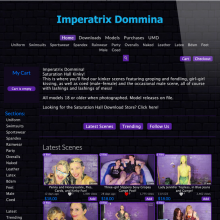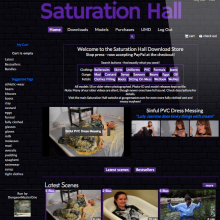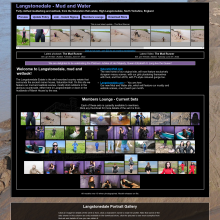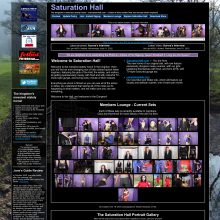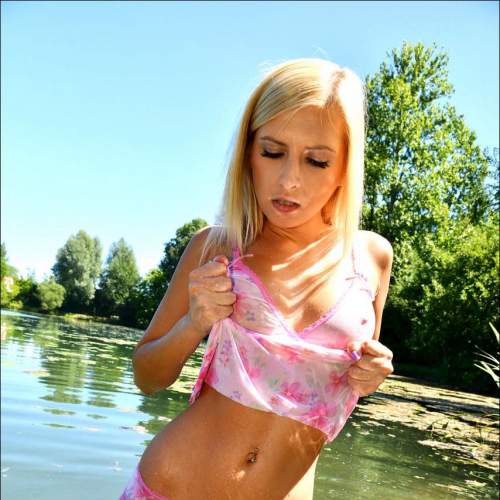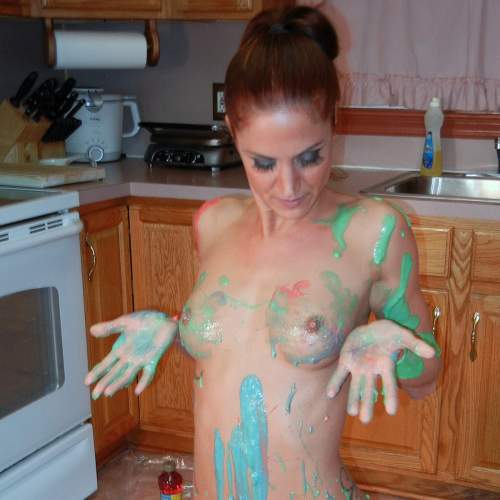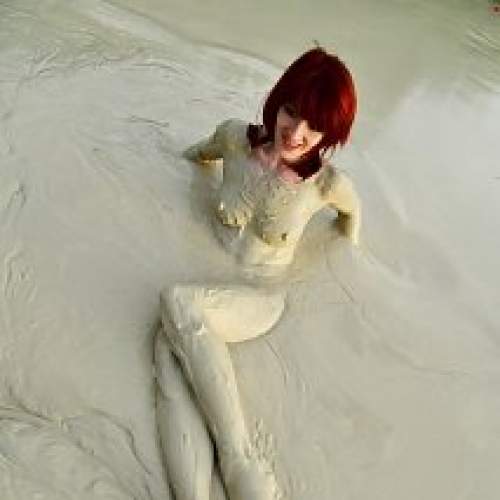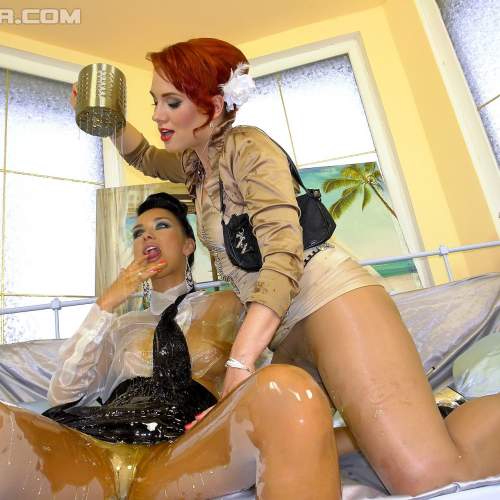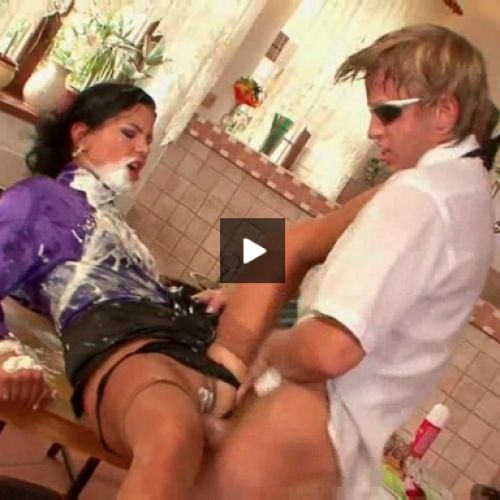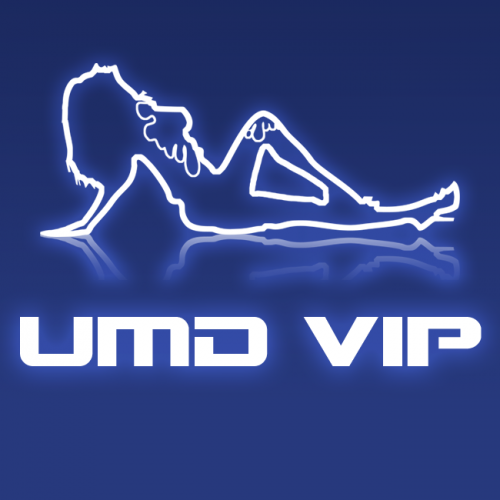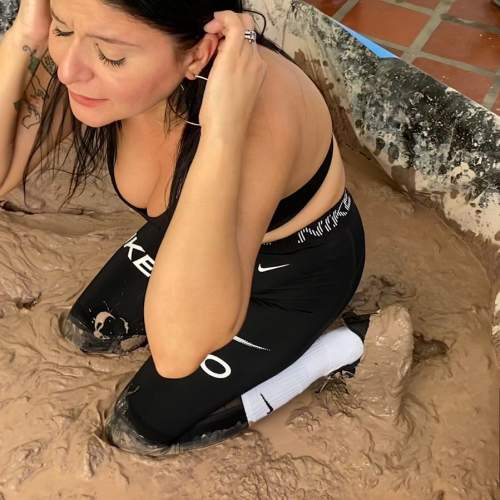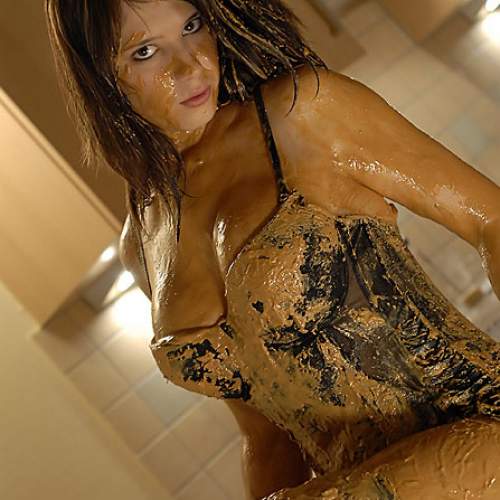|
|
|||
| forums: groups: | |||
|
"The Splat the Brat guide to synthetic slime images"
I've had a few people ask in the past about prompts for Splat the Brat so I thought I'd write a guide.
This is a list of principles for making game show slime images with Bing that you can either follow or ignore as you see fit. These work for me, they might work for you.
1. Don't use 'slime' or 'gunge'. All text-to-image models interpret both the literal and connotative elements of language. 'Slime' strongly connotes a kids show, and I don't want that.
2. Substances can be anything. No text-to-image model does any thinking or checking about whether a substance is safe or practical. Here is a list of some substances that work for me: glycerine, gelatin, tapioca, mayo, molten plastic, molten glass, PVA, PEG-500, jam, marmalade, oatmeal, cheese spread. You can concatenate them to make a fictional substance: mayo-gelatin, tapioca-molten-plastic, marshmallow-ketchup-glycerine. It might be smooth, sticky, stretchy, clear, glossy. You can even make up a word like 'grak' or 'frep' and its meaning will be interpreted by context.
3. Build up your prompt to build up the mess. You want to have coverage, you need to describe coverage. The substance will fall onto the head, drip down the hair, obscure the face, block the vision, pool in the lap, dribble from clothes, drip from hands, stick to clothes, soak hair. This should be in your prompt.
4. Reactions. Reactions are what makes an image work, you are synthesizing the moment of getting gunged. For many, this is what the fetish is about. People are shocked, surprised, annoyed, they might be giggling, cringing, wincing, shrieking, screaming, flapping. They might be indignant, nervous, timid, bemused, embarrassed. An adjective used to directly describe your subject might get a prompt blocked, but it works just to put a list of adjectives somewhere in the prompt.
5. Clothing. Clothing is trivial but don't forget about connotations.
6. You can give your subject a job or a (non-specific) name. If you're worried about 'Bing Face', this can be a way to fix it.
7. Don't fear the dog. A good prompt is a prompt that produces good images, not a prompt that gets no dogs. If it can do both, great! But you should prioritise the quality of images over the ease of generating them.
8. Be selective. This is by far the most important principle. Only keep an image if it's good. All the hands and proportions are correct, the situation looks physically plausible, the image is ethically sound, and there's something about it that makes it hot. You are solely responsible for what you post. Take a moment to look at the image. Do your flies back up before posting. Be selective, and don't be repetitive.
Using these principles, here's a fairly basic prompt:
Have fun.
This is a list of principles for making game show slime images with Bing that you can either follow or ignore as you see fit. These work for me, they might work for you.
1. Don't use 'slime' or 'gunge'. All text-to-image models interpret both the literal and connotative elements of language. 'Slime' strongly connotes a kids show, and I don't want that.
2. Substances can be anything. No text-to-image model does any thinking or checking about whether a substance is safe or practical. Here is a list of some substances that work for me: glycerine, gelatin, tapioca, mayo, molten plastic, molten glass, PVA, PEG-500, jam, marmalade, oatmeal, cheese spread. You can concatenate them to make a fictional substance: mayo-gelatin, tapioca-molten-plastic, marshmallow-ketchup-glycerine. It might be smooth, sticky, stretchy, clear, glossy. You can even make up a word like 'grak' or 'frep' and its meaning will be interpreted by context.
3. Build up your prompt to build up the mess. You want to have coverage, you need to describe coverage. The substance will fall onto the head, drip down the hair, obscure the face, block the vision, pool in the lap, dribble from clothes, drip from hands, stick to clothes, soak hair. This should be in your prompt.
4. Reactions. Reactions are what makes an image work, you are synthesizing the moment of getting gunged. For many, this is what the fetish is about. People are shocked, surprised, annoyed, they might be giggling, cringing, wincing, shrieking, screaming, flapping. They might be indignant, nervous, timid, bemused, embarrassed. An adjective used to directly describe your subject might get a prompt blocked, but it works just to put a list of adjectives somewhere in the prompt.
5. Clothing. Clothing is trivial but don't forget about connotations.
6. You can give your subject a job or a (non-specific) name. If you're worried about 'Bing Face', this can be a way to fix it.
7. Don't fear the dog. A good prompt is a prompt that produces good images, not a prompt that gets no dogs. If it can do both, great! But you should prioritise the quality of images over the ease of generating them.
8. Be selective. This is by far the most important principle. Only keep an image if it's good. All the hands and proportions are correct, the situation looks physically plausible, the image is ethically sound, and there's something about it that makes it hot. You are solely responsible for what you post. Take a moment to look at the image. Do your flies back up before posting. Be selective, and don't be repetitive.
Using these principles, here's a fairly basic prompt:
Photo of a fun gameshow, a 25-year-old dancer sitting in a quiz chair. Surprised, giggling, shrieking. White top, black skirt. She is completely coated in smooth green PEG-500. Clear, stretchy green PEG-500 obscures her face and blocks her vision. A vertical stream of smooth green PEG-500 is falling onto her head from high above. PEG-500 soaks her hair, dripping from her head, shoulders and clothes, pools in lap. Female audience laughing
Have fun.
Thank you for this I will go back to battle the dog refreshed!
Thanks, really interesting to see different approaches to the same problem. Very nice of you to share prompts examples.
I've just realised I've missed another principle that I follow quite strictly. Probably goes between 5 and 6.
5.5. Don't ask for 'beautiful', don't ask for 'pretty', don't ask for 'attractive'. 'Beautiful' is boring and looks false. The button nose, the slightly too big eyes, the slightly too wide smile, the too slim figure. The real-life Disney princess look - I see it a lot on AI photos. I don't want it, so I don't ask for it.
5.5. Don't ask for 'beautiful', don't ask for 'pretty', don't ask for 'attractive'. 'Beautiful' is boring and looks false. The button nose, the slightly too big eyes, the slightly too wide smile, the too slim figure. The real-life Disney princess look - I see it a lot on AI photos. I don't want it, so I don't ask for it.
thereald said: I've just realised I've missed another principle that I follow quite strictly. Probably goes between 5 and 6.
5.5. Don't ask for 'beautiful', don't ask for 'pretty', don't ask for 'attractive'. 'Beautiful' is boring and looks false. The button nose, the slightly too big eyes, the slightly too wide smile, the too slim figure. The real-life Disney princess look - I see it a lot on AI photos. I don't want it, so I don't ask for it.
5.5. Don't ask for 'beautiful', don't ask for 'pretty', don't ask for 'attractive'. 'Beautiful' is boring and looks false. The button nose, the slightly too big eyes, the slightly too wide smile, the too slim figure. The real-life Disney princess look - I see it a lot on AI photos. I don't want it, so I don't ask for it.
Don't tell me what to do! hehe j/k
Personally, I like the button nose and the slightly larger eyes. I could do without the unnaturally wide smiles and the too-slim figures though. I've learned not to ask for beautiful/pretty/attractive though. The generator does that by default, and asking for those makes it double down and make them less realistic. I've found that instead of asking for happy/smiling/excited and getting the unnatural smiles or nightmare-fuel laughing faces, using the adjective "content" gives more natural smiles or happy faces. With "content," even the faces that aren't smiling are expressive rather than the default bored look.
[Edited to add: Thanks for the tips! I'd never heard or thought of some of them before, so hopefully they help me improve!]
WF1 said: Now the next challenge would be to make these look more realistic. But that's not easy with Bing, unfortunately.
I would love a happy medium between Bing's smooth, shiny faces and Krea's pitted faces, freckle blotches, and makeup removal. Krea does such a great job with making clothing look realistic and enhancing Bing's out-of-focus backgrounds, but so many of the Krea images look even more unnatural than Bing's when it comes to faces and skin, especially when WAM is involved.
Kabe22 said: I would love a happy medium between Bing's smooth, shiny faces and Krea's pitted faces, freckle blotches, and makeup removal. Krea does such a great job with making clothing look realistic and enhancing Bing's out-of-focus backgrounds, but so many of the Krea images look even more unnatural than Bing's when it comes to faces and skin, especially when WAM is involved.
I've been playing around with Krea upscaling on some of my images and found that it gives a better look to faces especially while wet clothes (I ususally do more wetlook stuff) sometimes can look worse than before.
When talking about realistic and natural faces however I think it's still hard to beat Midjourney.
Thanks!
Actually I did not care about it being public, but they're currently in Beta with image generation directly from their control center without the need to use Discord. I currently do not have an active subscription but maybe will try it again soon, as I got some great results back then - especially when they introduced their newest engine and the filters seemed to be pretty weak (although that gave me a 24hr ban).
Actually I did not care about it being public, but they're currently in Beta with image generation directly from their control center without the need to use Discord. I currently do not have an active subscription but maybe will try it again soon, as I got some great results back then - especially when they introduced their newest engine and the filters seemed to be pretty weak (although that gave me a 24hr ban).
WF1 said:
I've been playing around with Krea upscaling on some of my images and found that it gives a better look to faces especially while wet clothes (I ususally do more wetlook stuff) sometimes can look worse than before.
When talking about realistic and natural faces however I think it's still hard to beat Midjourney.
Kabe22 said: I would love a happy medium between Bing's smooth, shiny faces and Krea's pitted faces, freckle blotches, and makeup removal. Krea does such a great job with making clothing look realistic and enhancing Bing's out-of-focus backgrounds, but so many of the Krea images look even more unnatural than Bing's when it comes to faces and skin, especially when WAM is involved.
I've been playing around with Krea upscaling on some of my images and found that it gives a better look to faces especially while wet clothes (I ususally do more wetlook stuff) sometimes can look worse than before.
When talking about realistic and natural faces however I think it's still hard to beat Midjourney.
That is such an amazing picture! You should do more like that!
If like me you find certain words like ketchup and mayonnaise blocked, try deliberately misspelling them e.g. kettchuup and mayyonaise.
Obviously expressions like big breasts won't get you very far, but I have found that broad shoulders and round shaped face can sort of get that effect.
Obviously expressions like big breasts won't get you very far, but I have found that broad shoulders and round shaped face can sort of get that effect.
schneider said: If like me you find certain words like ketchup and mayonnaise blocked, try deliberately misspelling them e.g. kettchuup and mayyonaise.
Obviously expressions like big breasts won't get you very far, but I have found that broad shoulders and round shaped face can sort of get that effect.
Obviously expressions like big breasts won't get you very far, but I have found that broad shoulders and round shaped face can sort of get that effect.
Good points. It's rarely a individual word that gets a prompt blocked, it's the prompt as a whole that is judged - I've used both 'mayo' and 'ketchup' in prompts successfully. But I agree, sometimes it's easiest to spell the word wrong than it is to reword the whole prompt.
Similarly with describing the subject: 'big breasted' won't get you anywhere but 'round' or even 'fat' might get you what you want.
6/21/24, 3:03am: This post won't bump the thread to the top.
thereald said: If it wasn't on a public discord I'd consider using it again. Great picture.
Following up on that, I reactivated my account to test it. The direct creation feature from their website is officially still in alpha status, but it already works like a charm and also the usuability is SO much better than with using Discord.
You still need a Discord account for login but none of the creations get shared there.
6/21/24, 3:03am: This post won't bump the thread to the top.
OMG using the substance 'molten glass' that had me rolling on the floor LMAO.
I can't believe how stupid Bing is. if you say "pie in the face" then that gets you in jail with the inappropriate content warning we're gonna suspend your account warning. but eh molten glass? ok.
I have found jamming "OLIVEOIL" in to one word works with no issues. but not "oil", that is bad.
also one of my favorites is "INK". you can specify the color you want. it is dark, it saturates clothes, and gives a wetlook shine.
I can't believe how stupid Bing is. if you say "pie in the face" then that gets you in jail with the inappropriate content warning we're gonna suspend your account warning. but eh molten glass? ok.
I have found jamming "OLIVEOIL" in to one word works with no issues. but not "oil", that is bad.
also one of my favorites is "INK". you can specify the color you want. it is dark, it saturates clothes, and gives a wetlook shine.
Saturation Hall, Langstonedale
Lord of the Pies
Interesting how different each AI engine is regarding prompt handling.
I tried a variation of the example above (black jeans instead of skirt, custard instead of PEG-500, stream falling into her lap rather than over her head) on ChatGPT and got an instant "policy violation" error. Tried it on another system I'm involved with, and got images, but poor ones - the substance had become like vinyl leather, not remotely flowing. Clearly each engine processes things very differenty.
Thanks for a very interesting thread.
I tried a variation of the example above (black jeans instead of skirt, custard instead of PEG-500, stream falling into her lap rather than over her head) on ChatGPT and got an instant "policy violation" error. Tried it on another system I'm involved with, and got images, but poor ones - the substance had become like vinyl leather, not remotely flowing. Clearly each engine processes things very differenty.
Thanks for a very interesting thread.

Saturation Hall - Forth! The Gungemaidens!
DungeonMasterOne said: Interesting how different each AI engine is regarding prompt handling.
I tried a variation of the example above (black jeans instead of skirt, custard instead of PEG-500, stream falling into her lap rather than over her head) on ChatGPT and got an instant "policy violation" error. Tried it on another system I'm involved with, and got images, but poor ones - the substance had become like vinyl leather, not remotely flowing. Clearly each engine processes things very differenty.
Thanks for a very interesting thread.
I tried a variation of the example above (black jeans instead of skirt, custard instead of PEG-500, stream falling into her lap rather than over her head) on ChatGPT and got an instant "policy violation" error. Tried it on another system I'm involved with, and got images, but poor ones - the substance had become like vinyl leather, not remotely flowing. Clearly each engine processes things very differenty.
Thanks for a very interesting thread.

As a rule of thumb, the more likely a normie is to use the word as a euphemism for semen, the more likely it is to get your prompt blocked on Bing.
You can try another substance and make it yellow. 'Cheese sauce' or 'molten plastic' work.
I suspect it isn't going to be a big fan of "falling into lap" either. "falling onto her, pooling in lap" might work better.
DungeonMasterOne said: Interesting how different each AI engine is regarding prompt handling.
I tried a variation of the example above (black jeans instead of skirt, custard instead of PEG-500, stream falling into her lap rather than over her head) on ChatGPT and got an instant "policy violation" error. Tried it on another system I'm involved with, and got images, but poor ones - the substance had become like vinyl leather, not remotely flowing. Clearly each engine processes things very differenty.
Thanks for a very interesting thread.
I tried a variation of the example above (black jeans instead of skirt, custard instead of PEG-500, stream falling into her lap rather than over her head) on ChatGPT and got an instant "policy violation" error. Tried it on another system I'm involved with, and got images, but poor ones - the substance had become like vinyl leather, not remotely flowing. Clearly each engine processes things very differenty.
Thanks for a very interesting thread.

It depends on what you mean by engine. Dalle-3, the underlying engine that GPT uses is also used by Bing, Designer and a number of other sites. The moderation engine and content filtering however can be extensively tuned depending on the site.
Other sites tend to use variations of Stable diffusion or their own finetunes but again, moderation and prompt interpretation will vary.
Interestingly, there are some newer models coming out on different architectures which are showing promise as well.
Sponsors
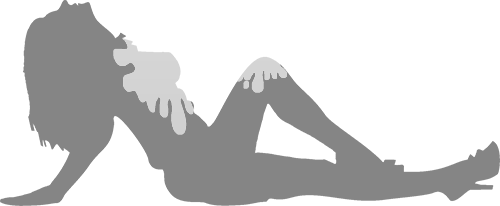
Design & Code ©1998-2026 Loverbuns, LLC 18 U.S.C. 2257 Record-Keeping Requirements Compliance Statement
Epoch Billing Support Log In





 Love you, too
Love you, too
 The suggestions for getting more facial coverage are definitely useful.
The suggestions for getting more facial coverage are definitely useful.

